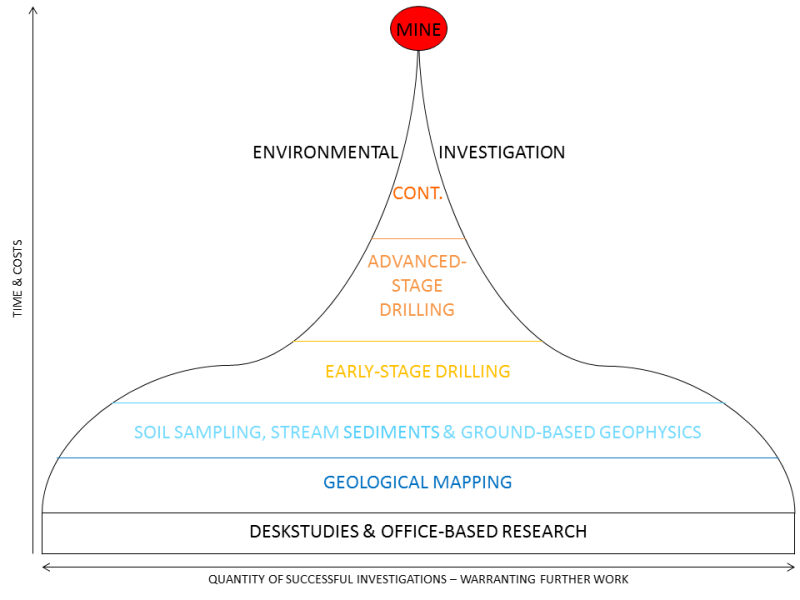The links below provide information on the most common methods of
mineral exploration in Ireland and across the world. Mineral exploration is the
process of searching for evidence of any mineralisation hosted in the
surrounding rocks. The general principle works by extracting pieces of
geological information from several places, and extrapolating
this over the larger area to develop a geological
picture. Exploration works in stages of increasing sophistication, with
cheap, cruder methods implemented at the start, and if the resultant
information is economically interesting, this warrants the next, more
advanced (and expensive) techniques. However, it is very rare to
find sufficiently enriched ore bodies, and so most exploration campaigns
stop after the first/couple of stages. Exploration pyramid, showing how after the initial desk study research,
each subsequent stage becomes less and less likely. To put into numeric
context: In Ireland, despite thousands of prospecting licences, only 3 modern
examples of mines have opened since the 1960s.
Exploration pyramid, showing how after the initial desk study research,
each subsequent stage becomes less and less likely. To put into numeric
context: In Ireland, despite thousands of prospecting licences, only 3 modern
examples of mines have opened since the 1960s.